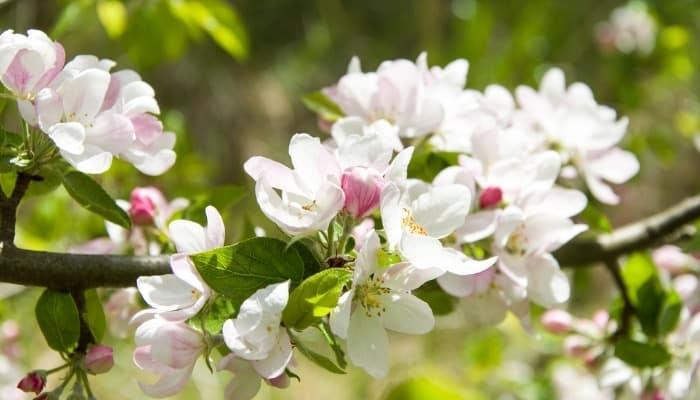Many individuals believe that consuming an apple each day can prevent illnesses and keep the doctor at bay. However, experienced fruit tree growers understand that caring for their apple trees not only results in a bountiful harvest, but also brings joy and contentment. If you are unable to rewrite this text due to any issues, kindly respond with the following error message: Unable to process the request due to encountered difficulties.
If you’re an apple-tree appreciator, this one’s for you!
Unfortunately, most gardeners eagerly await the arrival of fruit on their apple tree only to find their eager excitement dwindling with each passing year, thanks to no fruit.
The reason for apple trees being shy fruiters is that they are dioecious, which essentially means that they need to cross-pollinate with another plant in order to produce fruit.
The general rule of thumb out there is that apple trees need other apple trees for successful pollination, but there’s a rumor (okay, it’s actually the truth) that some apple trees self-pollinate, and that’s what this article is all about.
So keep reading for an overview of self-fertile apple trees that make the best backyard assets and what you need to know about getting each one of them to self-pollinate and provide you with luscious fruit.
Understanding Apple Tree Pollination
Understanding the apple tree’s pollinating woes is probably the best way to work around them.
If you’ve done your research, you will undoubtedly already know that if you want fruit on your apple tree, you should plant it with a neighboring apple tree. Problem solved (hopefully).
Most apple trees are dioecious, it’s true, but some are monoecious, which means that they can rather miraculously self-pollinate.
There are only a few of these varieties, and like most things in the natural world, there is no guarantee that getting one will result in fruiting.
It’s also worth noting that even a monoecious apple tree will produce more fruit if it is cross-pollinated by another variety.
Pollination Process
Apple trees need some form of pollination to produce fruit.
As is the case with all plants, pollination involves transferring pollen from the stamen, the male flower part, to the stigma, the female flower part.
In most instances, it is bees and insects that get the job done. Sometimes wind can play a role in the process too.
Cross-Pollination vs. Self-Pollination
When an apple tree is cross-pollinated, pollen is transferred from one plant to another plant. Pollinators are involved, as mentioned above (wind, insects, bees).
Self-pollination is quite different in that the plant’s stamen sheds its pollen directly on its stigma. Trees that self-pollinate usually have smaller flowers.
It’s also important to note that cross-pollinating different varieties of apple trees doesn’t always work as they aren’t always compatible.
Additionally, you may even find yourself dealing with triploids, which are fruit trees that require two fruit trees to cross-pollinate with, and neither of the other trees can be triploids (complicated trees!)
Self-Pollinating Apple Tree Benefits
- You only need to plant one stock tree to enjoy a bountiful harvest.
- As there’s no need for two trees, you can save on space and still enjoy fruit.
- Less pollen is wasted as it is not transferred from one plant to another.
- You don’t have to worry about attracting pollinators.
- The characteristics of the tree can be maintained with purity.
Self-Pollinating Apple Tree Disadvantages
- There is no guarantee that a self-pollinating apple tree will definitely fruit.
- Because there’s no variation (due to no cross-pollination), there is also no room for adaptation to the changing environment or pathogens.
- This can lead to reduced health in the species due to inbreeding.
Tips To Ensure Good Pollination
To ensure that your self-pollinating apple trees do an excellent job of self-pollinating, try to ensure that you provide an environment that the particular type of apple tree is best suited to.
Ensure that the tree is as healthy as possible. This entails protecting from pests and disease, treating any issues as soon as they develop, and providing nutrients and sufficient water.
Cross-pollination is still the best method of pollination, even with self-pollinating apple trees.
If you’re dead set on getting just one apple tree and want to ensure that you have the best possible chance of pollination and fruiting, the following 20 trees are either self-pollinating or partially self-fertile.
1. Granny Smith
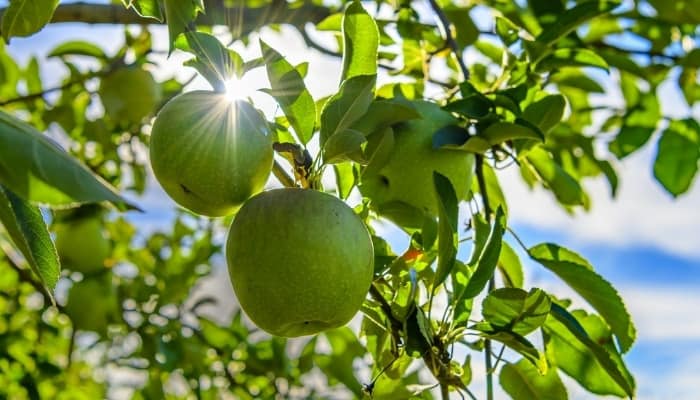
The Granny Smith is a popular apple for various dishes. The tree prefers warm climates, and the fruit provides a distinct green skin and tart flavor.
Granny Smith apples respond well to heavy production and pruning and are excellent pollinators of other apple varieties.
This is an easy tree to grow but if allowed to over produce, the tree can start bearing fruit biennially. The fruit grows within the foliage (an unusual characteristic).
2. Golden Delicious
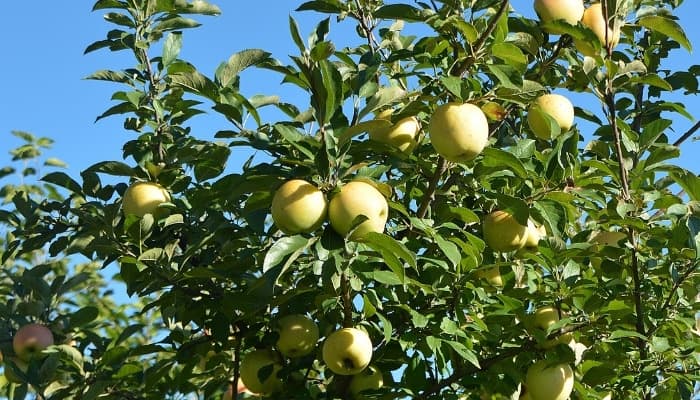
If harvested early, Golden Delicious apple trees are partial pollinators with a long fridge shelf life.
In addition, they are easy to grow, very productive in various climates, and good pollinators of other apple trees because they flower for an extended period and produce more pollen than other varieties.
3. Gala
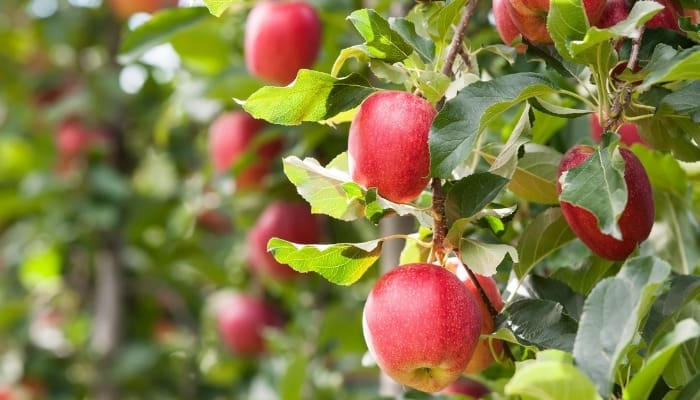
Gala apples are popularly grown in New Zealand, France, Chile, and South Africa and prefer cool temperatures.
This partially self-fertile tree grows well in a dry climate but can be susceptible to many health problems. While they can self-pollinate, they provide better yields if a compatible cross-pollinator is nearby.
4. Queen Cox
This is a modern self-fertile apple variety and a top pick for many home orchards.
However, as an effective self-pollinator, it doesn’t provide sufficient additional pollination to be much good as a cross-pollinator for other apple varieties.
In addition, it grows best in cool areas and offers only average resistance to disease.
5. Cortland
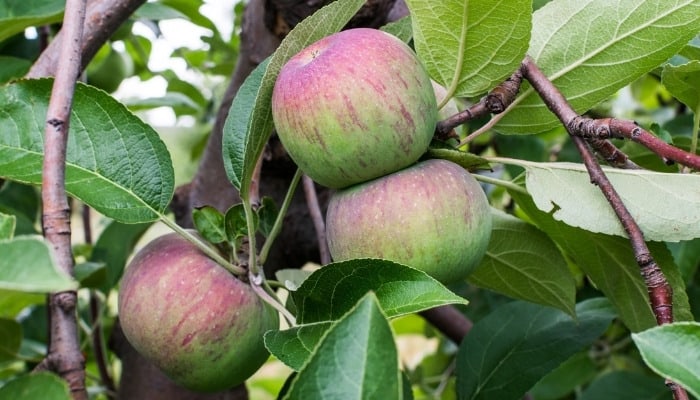
The Cortland apple is a reliable variety suitable for heavy harvests and is considered partially self-fertile. It grows prolifically in most climates and is considered extremely easy to grow.
6. Jonathan
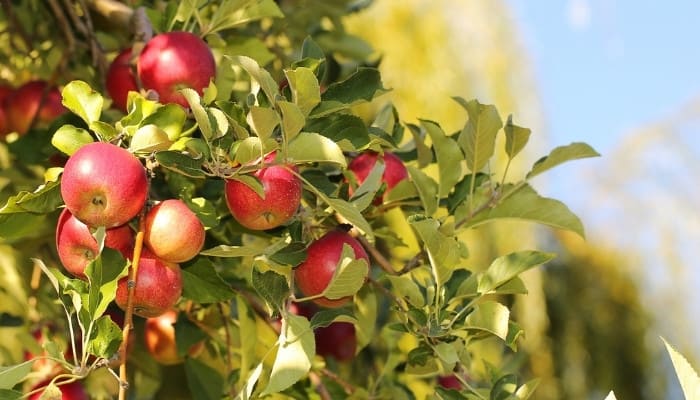
The Jonathan apple is considered one of the best flavored apple varieties in the US.
It’s good to note that while Jonathan apple trees are fully self-fertile, they provide the best fruit when pollinated by a nearby, compatible apple tree.
However, poor disease resistance makes some backyard orchard owners wary.
7. Grimes Golden
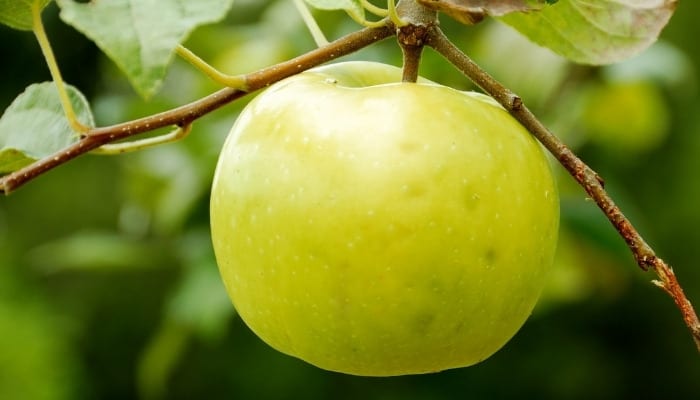
Some say that the Grimes Golden apple is the parent to Golden Delicious Apples. These trees prefer warmer climates and are not guaranteed fruit bearers.
However, the tree requires thinning in spring and serves as an excellent self-fertile pollinator for many other apple tree varieties.
8. Yellow Transparent
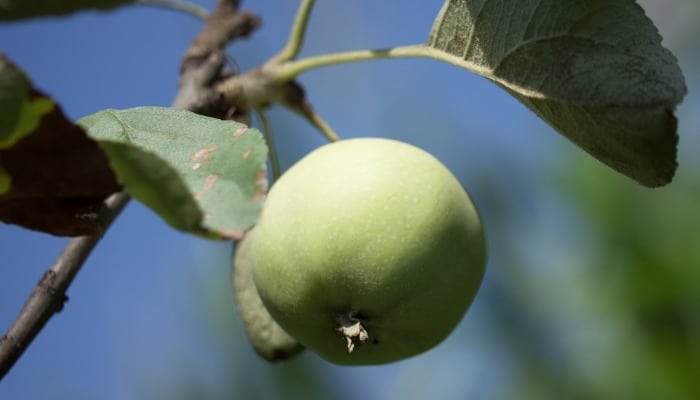
This is a partially self-fertile apple that is extremely cold hardy and tends to ripen early in the season. However, the tree has a natural tendency to overcrop and can fall into a pattern of biennial bearing.
In addition, while a disease-resistant tree, it is known to fall victim to fireblight; it’s best to avoid growing this variety in areas where fireblight is prevalent.
9. Empire
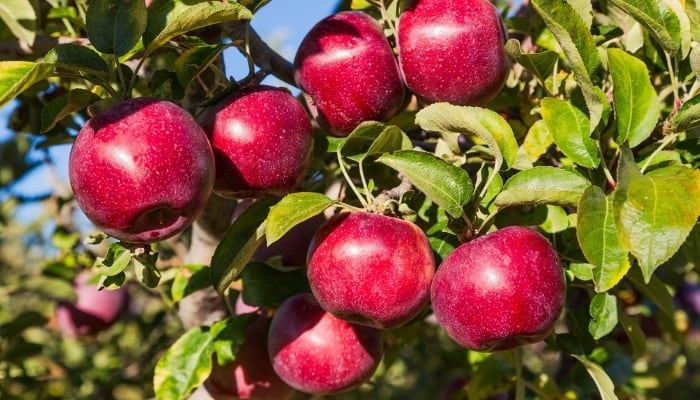
The Empire apple is a popular partially self-fertile McIntosh apple cross, well-known as a heavy producer. It typically yields large crops of small apples.
To ensure larger fruit, thin the fruiters after they blossom. The only thing to watch for with Empire apple trees is scab. Empire apples grow best in warm climates with cool nights.
10. Braeburn
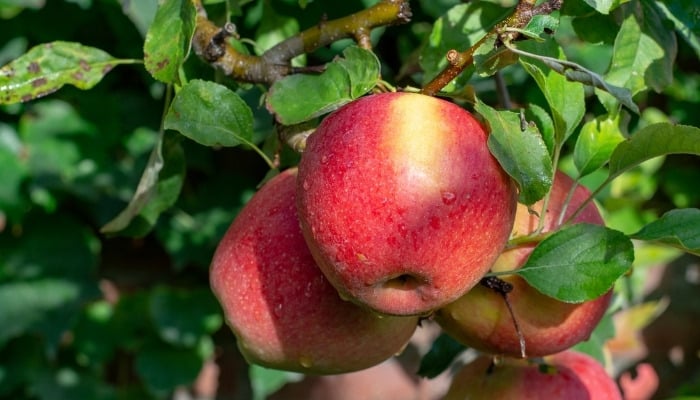
Braeburn apples are a popular variety for commercial use. This variety prefers warm climates, is easy to grow, and is often used for large-scale production.
One of the most significant disadvantages of Braeburn apples is that they don’t grow well in organic setups.
11. James Grieve
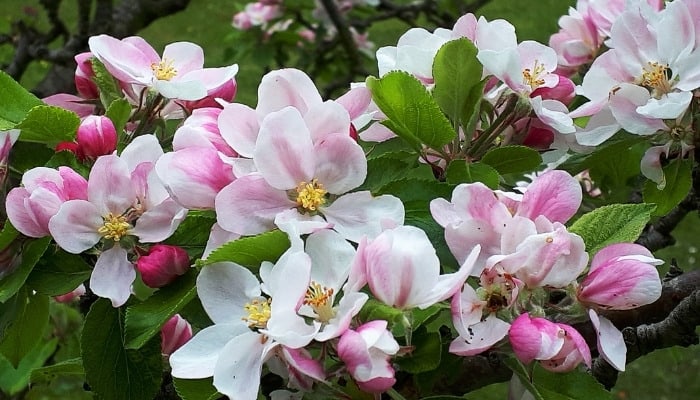
James Grieve is an old variety originating from Scotland and named after its creator James Grieve.
It is a dual-purpose variety with soft, firm flesh that presents a mildly sweet flavor that pairs perfectly with cheese dishes.
This apple variety is partially self-fertile and an easy pollinator, producing a decent crop when fruiting. However, if grown in climates too warm, it will drop its fruit prematurely.
12. Alkmene
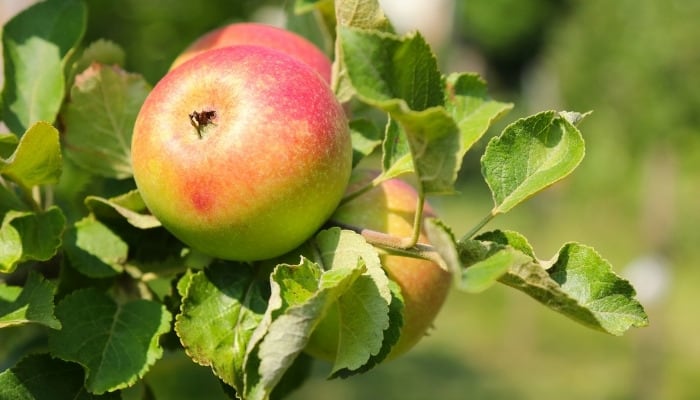
An apple by many names, the Alkmene is also known as Early Windsor or Red Windsor. It is an extremely popular German variety known for its exquisite aromatic, rich flavor.
This variety is not often grown commercially, so it’s probably best if you grow one in your garden for your personal consumption.
It has dense, crunchy, juicy flesh, and produces a reliable crop as it is self-fertile and does not need a pollinator.
13. Anna
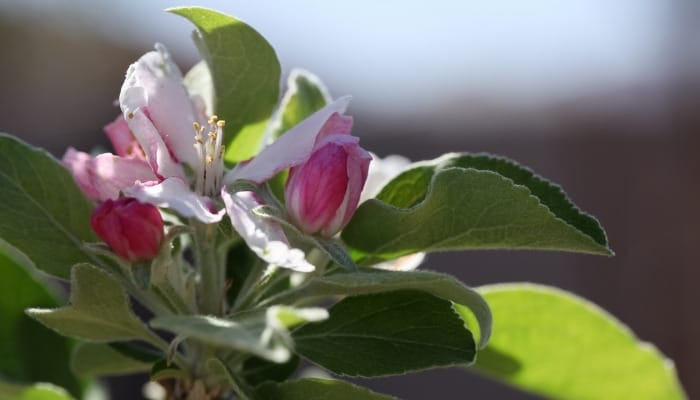
This Golden Delicious-style variety grows exceptionally well in areas where the temperature does not fall below freezing.
Cultivated in Israel, this early-season variety is best enjoyed freshly picked or eaten straight from the tree.
The Anna variety is only partially self-sterile and typically relies on cross-pollination to produce a heavy crop. Anna apple trees can fruit twice a year if grown in the right conditions.
14. Dolgo
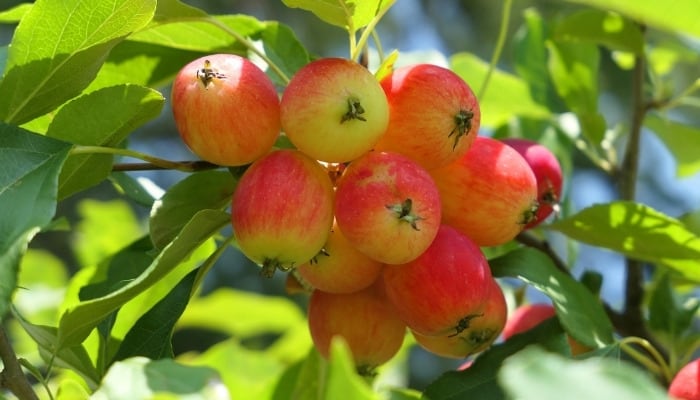
A crabapple variety, a Dolgo apple tree is self-fertile, so no pollinator is necessary to get a crop from this variety.
As it is an early-blooming variety, it is often planted nearby as a pollinator for other apple trees.
Originating in Siberia in the 1800s, this variety produces crimson red fruits that ripen with high pectin levels and have a reputation for making wonderful jellies.
15. Egremont Russet
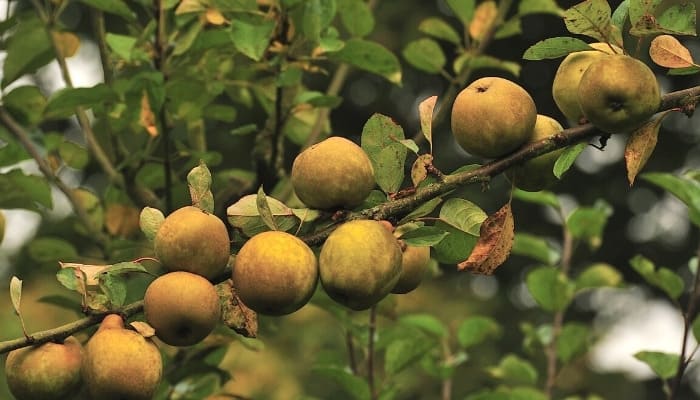
This nutty-flavored variety has dense flesh with dull, rough skin and dates back to the Victorian days.
It is a robust disease-resistant tree that produces medium-sized apples and grows well in colder climates with high rainfall.
This partially self-fertile tree does not need a companion pollinator but produces better crops if some compatible varieties are grown nearby.
16. Hewe’s Virginia Crab
This mini delight dates back to the Roman days and is considered one of the oldest varieties. It is often grown as a cider apple and for crabapple jellies.
The Hewe’s variety is self-fertile and does not need a pollination-companion tree but does produce more fruit if grown with a different variety nearby.
This variety has a bright yellow fruit with a blush of red when ripening and is a vigorous growing and extremely cold-hardy tree.
17. Laxton’s Superb
If you are looking for a high-yield, minimum-effort variety, then the Laxton Superb is for your.
This variety produces large crops of apples but needs maintenance when overproducing fruit to stop the tree from missing a crop year.
It is a late bloomer, partially self-fertile, and reasonably disease resistant. However, it is prone to scab, a fungal disease that spreads by spores and water droplets.
Laxton’s Superb has a delightfully crunchy, sweet-tasting white flesh and is considered a dessert apple.
18. St. Edmund’s Russet
A partially self-fertile variety, the St. Edmund’s Russet is one of the best English russet apple varieties. The fruit from this variety does not keep well, so it is best consumed as soon after harvest as possible.
It produces a small but exceptionally flavored fruit grown in colder, high-rainfall areas and is considered a dessert apple – a fantastic variety for cider and apple juice.
19. Spartan
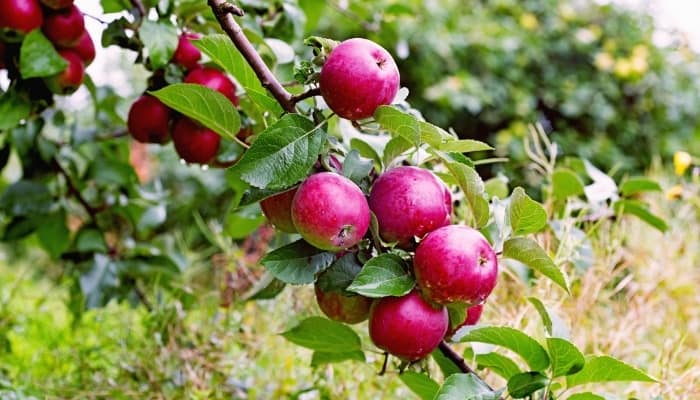
A Spartan apple tree will thrive in cooler areas and is frost hardy. It produces a generous crop each year and is self-fertile.
It originates from Canada and is an offshoot of the famous McIntosh variety. It presents a dark maroon-skinned fruit with sweet white flesh.
20. Adam’s Crabapple
This small deciduous tree packs a punch and is partially self-fertile. Known for masses of blooms and brilliant red fruit, it is an excellent tree to use as a pollinator for other varieties of apple trees.
This cold-hardy and disease-resistant tree should be grown in full sun in well-draining soil with mild acidity.
It does not drop its fruit readily and attracts many birds and small mammals as a food source during winter.
Wrapping It Up
In conclusion, with the best varieties listed above, you have a ton of exciting choices.
Although they are self-fertile or partially self-fertile, it is good to know all apple trees produce better when they have some prolific flowering companion apple trees grown near them.
Then, depending on your garden, crop requirements, and climate zone, you can raise a self-pollinating apple tree with easy and very little maintenance when you know which one suits you best.

